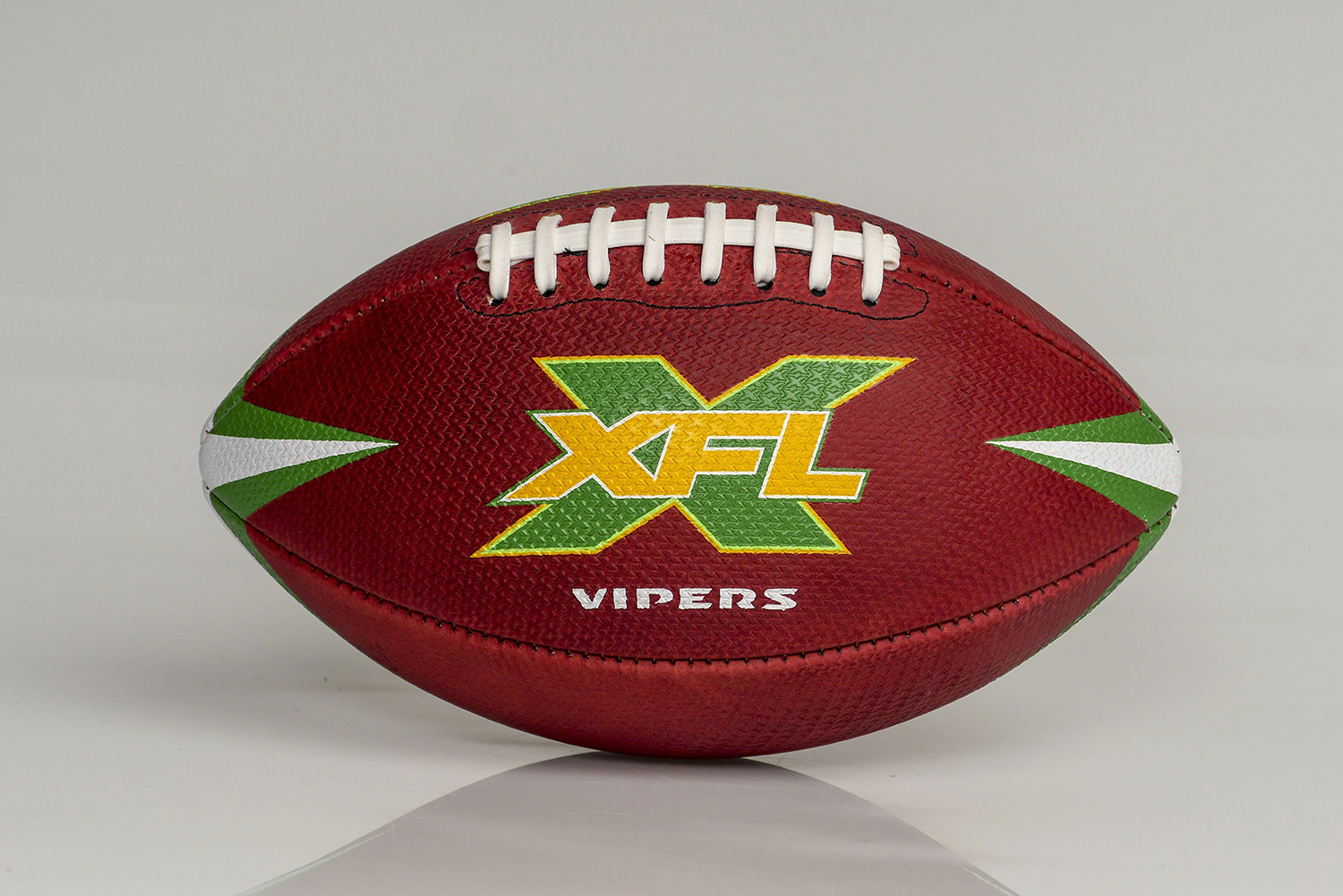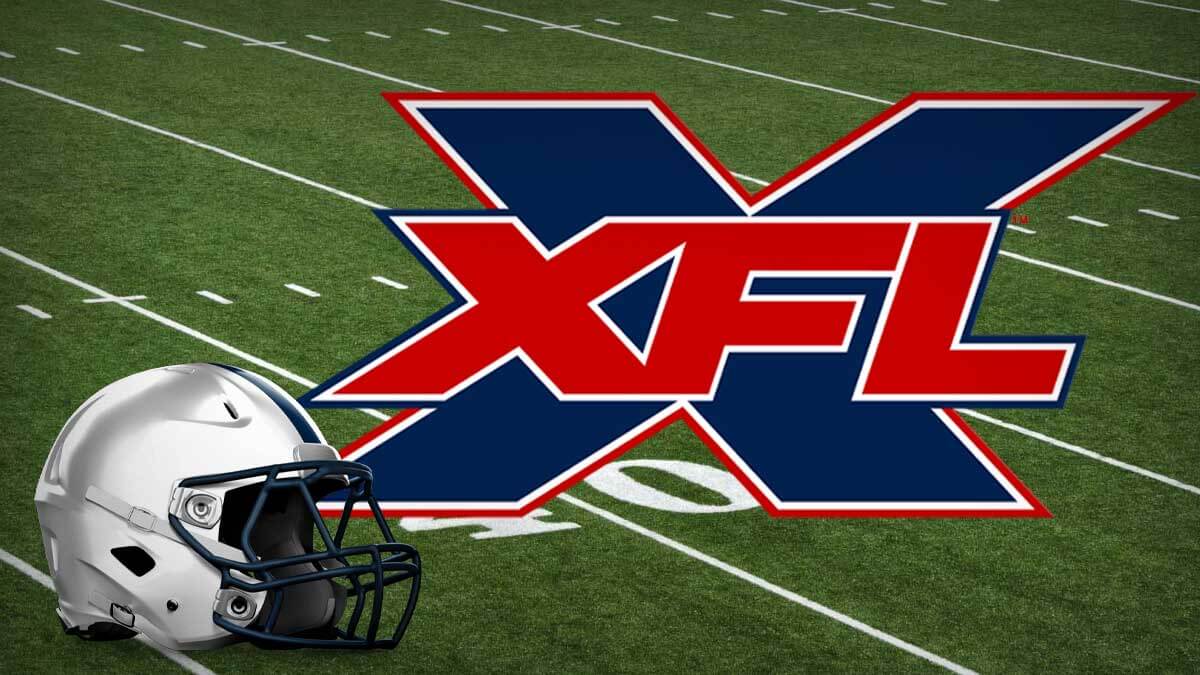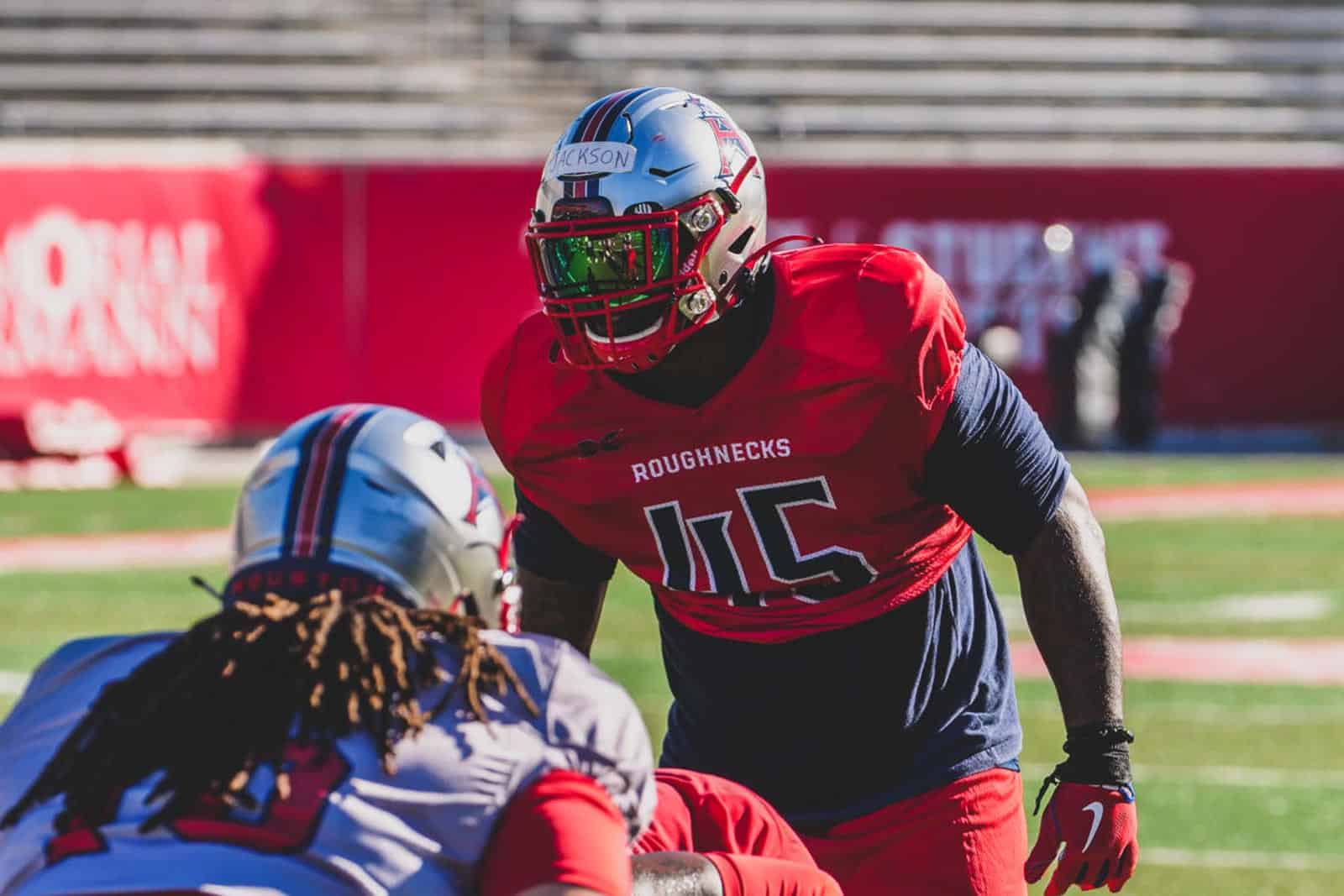Difference Between Xfl And Nfl Rules
Punts will be more infrequent in the XFL than the NFL, in large part thanks to rules put in place to encourage more aggressive decisions on fourth downs. The punt team can’t unleash its players. The main differences between The NFL and The XFL are as follows: 1. The opening coin toss rule was replaced with a “scramble” where one player from each team raced to take possession of the ball. During overtime, teams took turns trying to score from the opponents’ 20 yard line. Here's how the rules of the XFL differ from the NFLPersonal IG: http://instagram.com/theflightmike#Patr. Much faster play block: The XFL has a 25-second play clock compared to the NFL's 40-second play clock. A difference of 15 seconds may not sound like a lot, but this change will definitely be felt. The current XFL is going deeper, giving offenses the choice of going for one, two or three points, depending on if they choose to run a play from the 2-yard line, 5-yard line, or 10-yard line. Perhaps the biggest difference between the two different XFLs is shown in the leagues’ broadcast presentations.
The 2020 Super Bowl just wrapped up, yet that doesn’t mean football season is over. On Saturday, February 8th, the XFL will return after 19 years. This season features eight teams from around the country competing for the championship, which takes place in April. Today, I’m going to look at why this new league is starting, and talk about some of the important rule differences between the XFL and the NFL.
This is the second time the XFL has attempted to break into the mainstream sports world. The first time around, things didn’t exactly go as planned.
It’s always fun to see something new. It’s even more fun to place wagers on how everything will unfold. Those looking to bet on the XFL online can head to MyBookie today and find odds for every game of the season.
The XFL Returns After 19 Years
Back in 1999, the WWE and NBC came up with a groundbreaking idea. They would start a new American Football league that began immediately after the NFL’s Super Bowl concluded. The idea was to capture the interest of hardcore football fans who didn’t want to wait seven months to watch their favorite game again.
By 2001, these two companies launched the XFL. The first game took place on February 3rd of that year and understandably, the public was interested as to what would unfold. NBC aired the game and incorporated several wrestling-like elements suggested by the WWE.
As the season progressed, viewership numbers dropped.
By the time the championship game came around, it was clear this experiment was a failure.
Differences Between Nfl And Xfl
Looking back, the rule differences between the XFL and NFL may be partly to blame for the league’s collapse. It was confusing for many fans to understand why these changes were made.
After 19 years, it seems that Vince McMahan still sees potential in the XFL. The 2020 XFL season kicks off this Saturday and once again, fans are eager to see what takes place. To help make things easier for fans, we’re going to explain some of the major rule differences you’re going to see this weekend.
Rule #1: Points After Touchdowns
In the NFL, a touchdown grants a team six points. Fortunately, this is the case with the XFL, as well. The league owners seem to recognize that this needs to stay the same. As a way to prevent overtime, however, the XFL has a major difference in the way teams earn points after scoring a touchdown.
In this league, the extra point kick will be replaced with a short scrimmage play. You can think of it as a required 2-point conversion, with some differences. Teams can choose to score from the 2-yard goal line for one point, a score from 5 yards ears two points, and a score from the 10-yard line earns 3 points.
This is one of the rule differences between the XFL and NFL that fans from 2001 will remember. The league decided to keep this rule in place, despite some of the backlash that it faced from fans 19 years ago.

Kickers may not find life in the XFL quite as exciting as it is over in the NFL. The linemen will certainly have their work cut out, though.
Rule # 2: Kickoff and Punt Formations

Punting is extremely common in the NFL. When a team is unable to move down the field and hits fourth down, it’s almost guaranteed they’re kicking the ball away. For reasons unknown, the XFL wants to discourage players from punting at all.
In this league, players cannot begin running down the field until the punt has been caught. Gunners are not allowed here. The coffin corner punt will be treated as a touchback and dropped on the 35-yard line. The goal is to push teams to look for fourth-down conversions as much as possible.
There are some major changes for kickoffs, too.
Interestingly, members of the kicking team will line up on the receiving team’s 35-yard line. Blockers will be placed on their own 30-yard line. You can expect more kickoff return touchdowns coming as a result of this formation.
These rule differences between the XFL and NFL are hugely important. They completely change how a team is structured.
Rule #3: Overtime Scoring
The XFL is hoping to avoid overtime as much as possible. If, however, the final bell rings and two teams are tied, the game will look much different than a traditional NFL overtime. Here, both teams will compete for 2-point conversions, somewhat similar to a penalty shootout you see in soccer.
The overtime will be decided in a five-round shootout. Both teams will take turns starting at the opponent’s 5-yard line, attempting to score. If the defensive team recovers the ball during a play, the round is over.
If the defensive team commits a foul, the offense will be moved up to the 1-yard line. Also like football, if a team is mathematically defeated, or unable to win at any certain point, the game will end. Overtime will last a maximum of 27 minutes.
This is the first time this shootout-style of overtime has ever been attempted in football. It’s unclear exactly how fans will respond to this new style.
Rule #4: Double-Forward Pass
Most of the rule differences between the XFL and NFL have to do with gameplay. The officiating and fouls remain largely the same. One of the most interesting new XFL rules has to do with passing. In this league, players are able to pass the ball forward several times, as long as it has not passed the line of scrimmage.
This may be extremely confusing to some fans. In the NFL, only one forward pass is allowed per down. A foul will immediately be given to any team that throws the ball downfield more than once, regardless of where it takes place.
An XFL company statement claims,
“The Double Pass is one of the most exciting plays in football and the XFL aims to add excitement while maintaining traditional football.”
For longtime NFL players now competing in the XFL, this may be a tough rule to get used to.
This is another one that will significantly change how the game is played. A tight end or wide receiver with an ability to throw will be hugely valuable in this league.
There are some clear differences between the XFL and NFL. It’s almost impossible for Vince McMahon’s new league to truly compete with America’s most popular sports league. If it can capture even a small percentage of its fan base, however, it will be a major success.
The 2020 XFL season will begin this weekend, and if you’re planning on tuning in to get your football fix during the NFL offseason, you may be a little confused by the league’s new rules. The XFL has made several major rule changes in an attempt to reduce overall game times and produce more highlight-reel plays.
Here’s a primer on all the major rule changes and differences from standard NFL rules.
SCORING RULES:
Point-after touchdown plays
In the XFL, there are no kicked extra points after touchdowns. Instead, teams will have an option to run a play to score either 1, 2 or 3 extra points, creating the possibility for a 9-point touchdown.A 1-point try will be run from the 2-yard line. A 2-point try will start at the 5-yard line, and a 3-point try will start at the 10-yard line.GAME RULES:
Double-forward passes
Unlike in the NFL, the XFL will allow two forward passes on a play, provided that the first forward pass is caught behind the line of scrimmage.
What is a catch?
In the XFL, receivers only need to have one foot – or any other part of their body – contact the ground in bounds, instead of two feet in the NFL. Here is how the league defines what a catch is:
Secures control of a live ball in flight before the ball touches the ground.Touches the ground in bounds with any part of his body, and thenMaintains control of the ball long enough to enable him to perform an act common to the game, i.e., long enough to pitch or hand the ball, advance it, avoid or ward off an opponent, etc.
Kickoffs
The XFL designed its kicking rules in a way to increase the amount of returns we see compared to the NFL, and to make returns safer. Kickoffs are going to look very different.
On a kickoff, the kicker will kick the ball from their own 30-yard line, but every blocker will be lined up on the opposing team’s 35-yard line. The return team blockers will be lined up at their own 30, just five yards away.
Only the kicker and receiver can move before the ball is caught. All other blockers are permitted to move when the ball is caught, or three seconds after it hits the ground, if the ball isn’t caught.
Kicks that fly out of bounds, or kicks that fall short of the opposing 20-yard line, will result in the receiving team taking the ball at the kicking team’s 45-yard line.
Touchbacks will result in the receiving team starting at their own 35-yard line.
Teams will be required to inform an official if they plan to use an onside kick, meaning they cannot surprise the opposing team with an onside kick.
Punts
Punting rules have also been changed to entice coaches to go for it on fourth down.
All punts that result in touchbacks will be placed on the receiving team’s 35-yard line. Punts that go out of bounds will also be placed on the receiving team’s 35-yard line, or wherever the ball went out if that occurred before reaching the 35.
The punting team may not cross the line of scrimmage before the ball is punted, which should reduce the amount of fair catches significantly.
Challenges
There are no coaches challenges in the XFL. All reviews will be initiated by a replay official. Via the XFL, here is a list of reviewable plays:
(a) Plays involving possession. (b) Plays involving touching of either the ball or the ground. (c) Plays governed by the goal line. (d) Plays governed by the boundary lines. (e) Plays governed by the line of scrimmage. (f) Plays governed by the line to gain. (g) Number of players on the field at the snap. (h) Game administration. (1) Penalty enforcement. (2) Proper down. (3) Spot of a foul. (4) Status of the game clock. (i) Disqualification of a player. This list of reviewable plays is identical to those in the NFL prior to 2019.
OVERTIME FORMAT:
The XFL has devised a completely new format for overtime, which is comparable to a shootout in soccer.
In overtime, each team’s offense will have five attempts to complete a two-point conversion from the five-yard line, with each successful conversion being worth two points. The team with the most points at the end of the shootout is the winner. If one team clinches a win early, the unnecessary remaining rounds of the shootout will not be played.
There will be no coin toss to determine the order of overtime. The visiting team will always make the first two-point attempt.
Defenses cannot score in overtime possessions in the event of a turnover.
Penalties in overtime:
Penalties will be crucial in overtime plays. If the offensive team commits a pre-snap penalty, the ball will moved back and the play will be re-attempted. If the offense commits a post-snap penalty, the play is considered dead, and any score will not count.
If the defense commits a penalty pre-snap, the ball will be moved to the one-yard line. For a post-snap penalty, the offensive team will have the option to re-try the play from the one-yard line if they do not score. Any future penalties committed by the defense in any future round will result in an automatic score for the offense.

TIMING RULES:
Game clock:
The XFL will use a running clock outside of the final two minutes of the second quarter, and the final two minutes of the fourth quarter.
The final two minutes of the second and fourth quarters is what the XFL refers to as the “comeback period.” During these periods, plays that end out of bounds or with an incompletion will stop the clock until the next snap. The clock will be stopped after all other plays that end in bounds until the ball is spotted and five seconds have run off the play clock. In theory, this should give an offensive team leeway to run plays in the center of the field, as they will be able to rush back to the line of scrimmage without time coming off the clock.
The play clock is 25 seconds, and will begin when the ball is spotted following the previous play.
There will be one official on the field dedicated to spotting the ball, in an effort to speed up the process compared to the NFL.
Timeouts:
Each XFL team will receive two timeouts per half, compared to three per half for NFL teams.
The halftime break will be 10 minutes.
Difference Between Nfl And Xfl Rules
Penalties:
The XFL’s “illegal man downfield” rule has been rewritten to make it easier for officials to enforce.
Nfl And Xfl Differences
No ineligible player shall be or have been more than three yards beyond the line of scrimmage until a passer throws a legal forward pass that crosses the line of scrimmage. A player is in violation of this rule if any part of his body is beyond the three-yard limit.